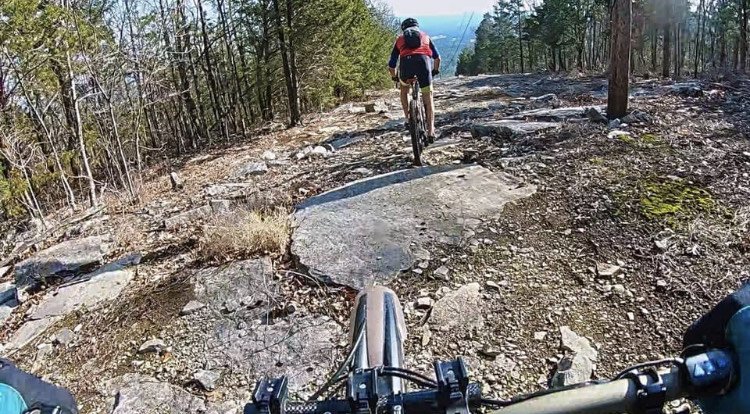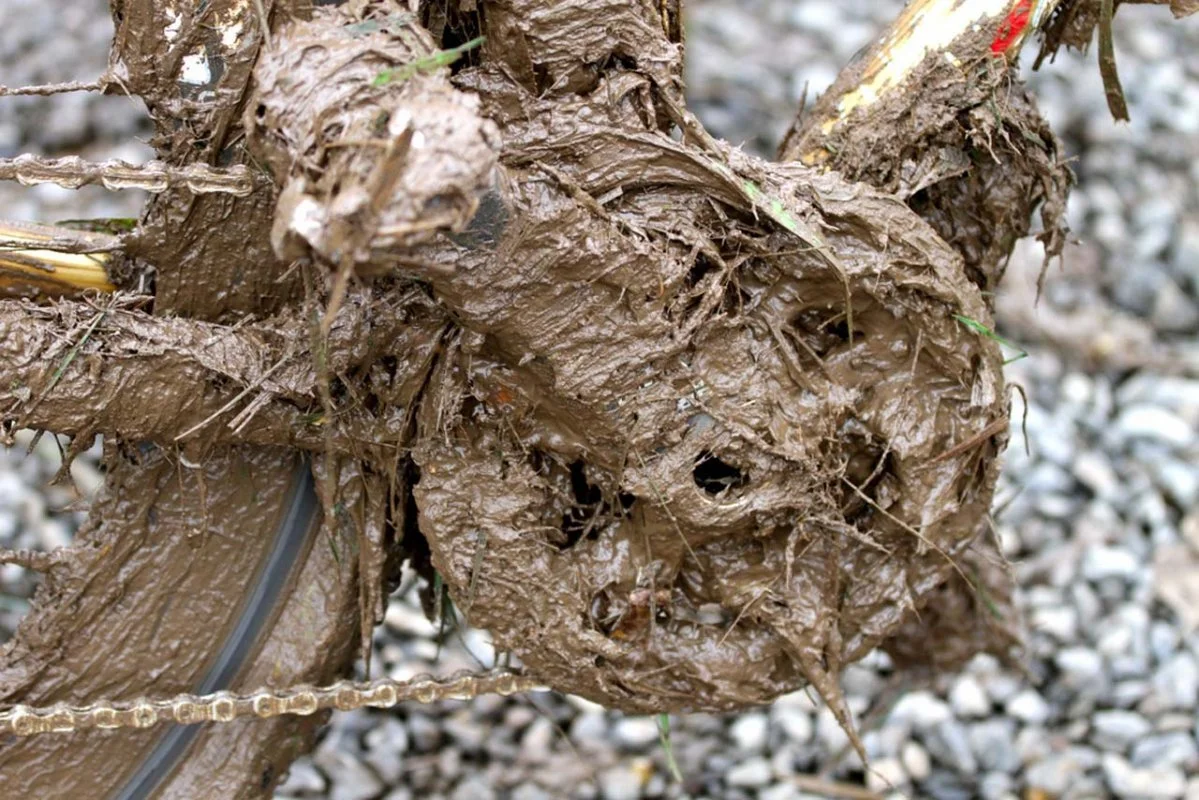Thank you for being a good steward of our trails and checking conditions before you ride.
Monte Sano Mountain:
John Hunt Park:
Space & Rocket Center:
Redstone Arsenal:
Chapman Mountain:
Blevins Gap:
Wade Mountain:
Wheeler:
When you’ve been stuck off the bike for days on end while it’s raining, you’re likely ready to get rolling again just as soon as the sun comes out!
But should you ride as soon as the rain stops?
Well, why not? After all, it’s not raining anymore…
For HAMR and our Land Managers, the majority of our maintenance work on the local trails is repairing water damage. If you count always-growing brush as water damage, rain is the root cause of most of the maintenance we perform year-round. Saturated soils mean easily-damaged trail tread and unstable hillsides. Big tracks (made by tires or feet) in the tread affect how the trail can handle water in the future and may develop into major ruts. Water-heavy trees become more susceptible to the pull of gravity. And in general, the changing landscape presents a greater potential for unanticipated circumstances. Waiting to ride gives the trails a chance to recover and stabilize.
Another reason to wait is preventing damage to your bike. Saturated soil, AKA mud, will hasten the wear on your drivetrain. And if you’re driving to the trailhead, when it’s wet out you might be driving home with a real mess on your hands. And on your steering wheel. And in your hair.
OK ok ok, I’m a good trail steward and I’ll wait to ride/use the trails. But how long do I wait? When can I ride?
That’s not always an easy answer as there are a lot of factors to consider. Like any other adventure in nature, the more you know before you go, the better prepared you will be to stay safe and have fun. Here are a few things to take into consideration when deciding when to ride after rain:
Soil composition – Several trails throughout the Huntsville area are made primarily of rocky limestone: think Goat Trail, Rocky Nightmare, Claymore. But many others have high clay and dirt content, which means MUD, damaged trail tread, damaged bikes, and damaged reputations: think lower Mountain Mist, John Hunt Park, lower McKay Hollow, etc.
How dry the trail was before it rained – Trails like High Trail and lower Mountain Mist tend to hold onto water even weeks after the last time that it rained, whereas trails built using newer trail building practices like Tally-Ho or D Breaze Way will shed water quickly.
Trail location – Trails on north-facing slopes or deep in the mountain don’t get as much sunlight and dry out much slower than trails that are sun-exposed.
How much it rained – Did it sprinkle for a few minutes this morning? You’ll probably enjoy hero dirt in the afternoon. But did it rain 2 inches in 2 hours? For trails that aren’t mostly rock, the general rule is wait 48 hours for every 1″ of rain the day before.
There’s always more to consider. And as is evident each time it rains, none of these matters are set in stone. But keeping all these factors in mind and choosing with care which trail to ride/use after it rains will help keep all our trails in good shape, better your chances of a fun ride, and help ensure your status as a good trail steward.
So… Where should I go when things are wet?
We always encourage trail users to wait until the trails are dried out before riding/hiking/running. Even if a trail has been modified to handle water with drains and proper outsloping, and even if that trail naturally handles rain well, and even if you are just one trail user and will have minimal impact, the cumulative impact of everyone heading to “the trails you can use after it rains” can still be damaging. Again, it is best to wait.
Having said that, Wheeler Wildlife Refuge is a gravel path that can be used regardless of weather conditions, and Chapman Mountain with its sandy soil and hardpacked terrain thanks to horse traffic tends to shed water well. Asking friends or friend groups (like the HAMR Discord group) where to ride is a good way of finding out which local rides are best after rain, and which you should avoid.
What’s the difference between HERO DIRT and TRAIL SLUDGE?
Hero dirt–slightly damp trail surface over normal, unsaturated hard-pack–provides amazing grip and satisfying wooshy noises as you rail down the singletrack. You might see a slight dusting of trail on your tires, but nothing accumulates between the knobs and you’re not leaving distinct tracks. On the other hand, if you can tell what tires the rider before you is rolling on, or which trail shoes they’re hiking in, from the tracks they left behind, and your own tires are gooping up with mud, the trail is too wet to use.
If it’s been pouring buckets of rain, wait a few days before riding our trails. They can still sustain damage; our trails are made out of rock and dirt, not steel.
Additionally, exercise caution when riding after a rain or a wind storm. You may know the trail well, but don’t let the dislodged rock or fallen tree on the trail take you by surprise. Be aware that our trails are constantly shifting and rarely remain the same after a storm.



